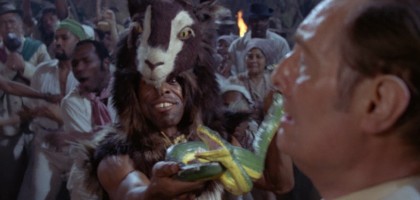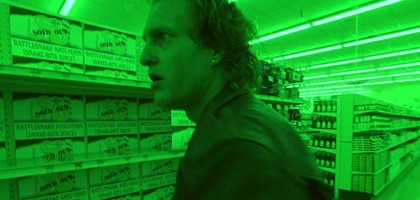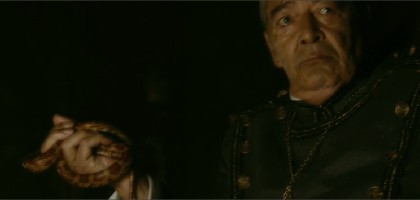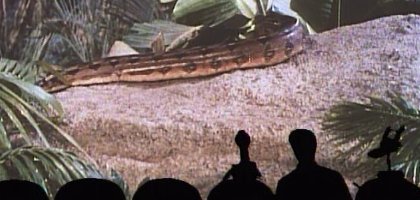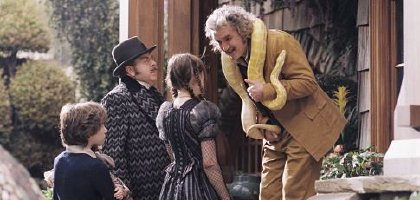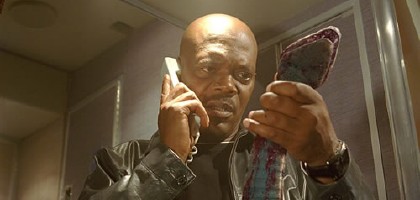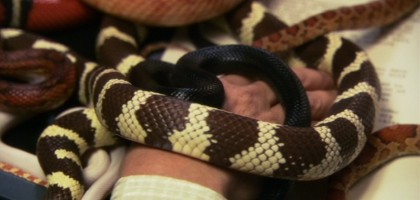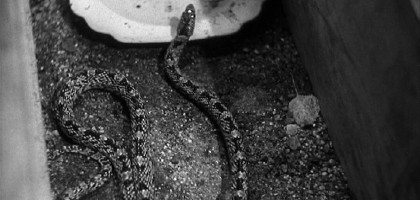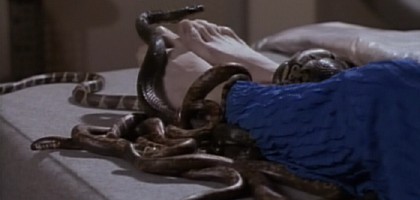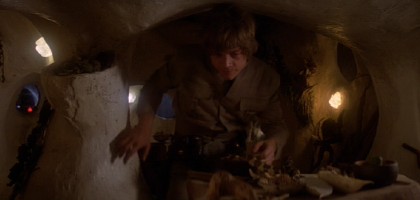Firewalker
- Year: 1986
- Format: Movie
- Buy It at Amazon.com
- View the IMDb Listing
- Categories: Pet Store Stand-ins
- Posted on August 25, 2010
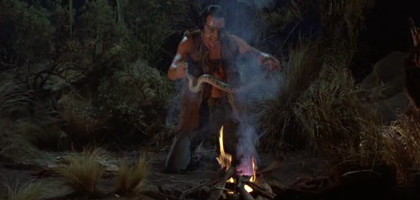
This low-rent action-comedy buddy flick, a lame atrocity courtesy of Chuck Norris and Cannon Films that, for some reason, is uncontaminated by firewalking (or continuity, or coherence), has a couple of snake scenes meant to represent some homogenized extruded Native American spiritual product. Both feature, as far as I can tell, boa constrictors, which are at least native to the vague area Norris, Gossett and Company appear to be operating in (geography is not a strong point of this movie). In the first scene, the villain appears to be performing some sparkly native magic with a snake — it’s probably meant to evoke the Hopi snake dances, but this is nowhere close in meaning or appearance (or snake used). In the second scene, a young woman sent to kill our heroes apparently transforms into a boa as a way of escaping.
